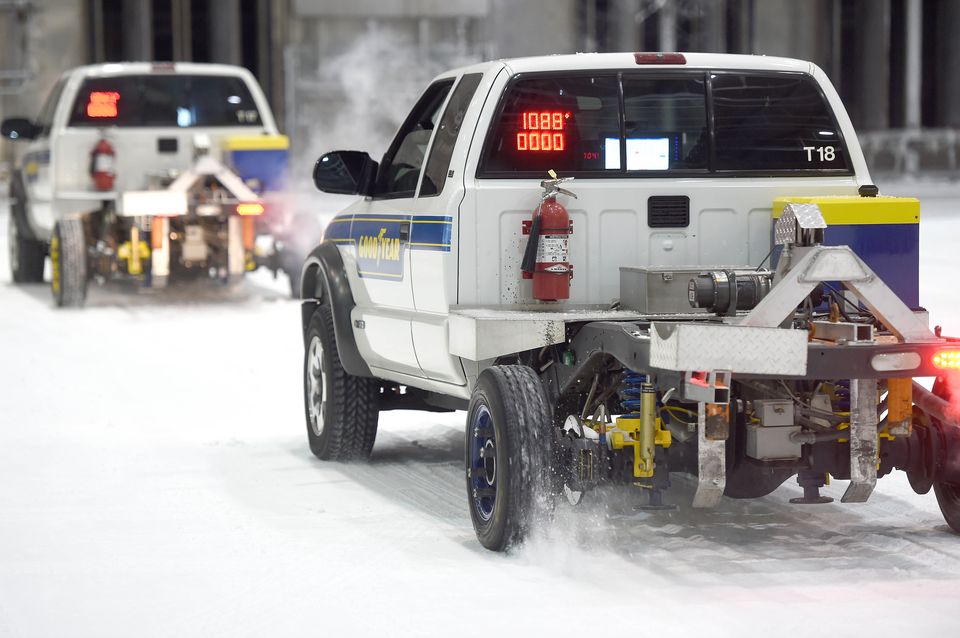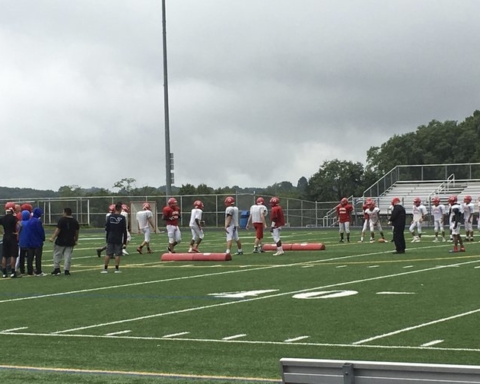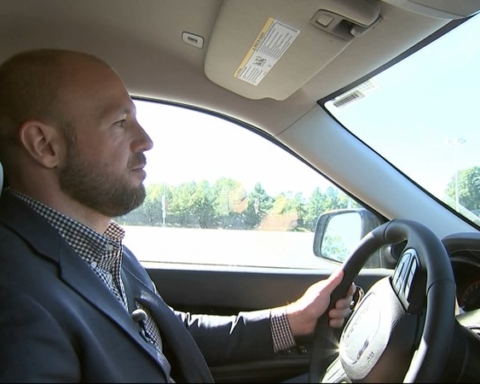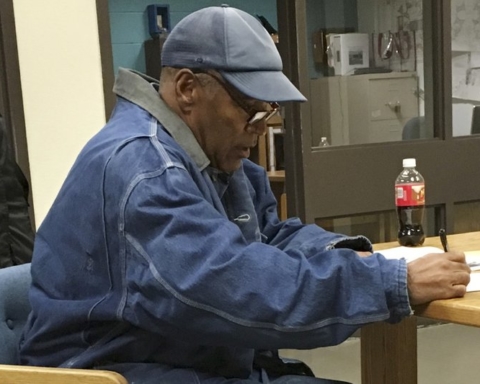Dressed in winter parkas, boots and gloves, engineers for Goodyear Tire & Rubber Co. used trucks equipped with special sensors, computers and weights as they drove wide circles through a snow-packed field in 10-degree weather on a recent afternoon.
Scientists from the Akron, Ohio-based tire maker traveled nearly 1,000 miles in search of the cold and snowy conditions needed for the early September testing. They found what they were looking for in the Florida Panhandle. The test engineers spent their evenings barefoot on the famous white sand beaches that line the Gulf of Mexico and they spent their days driving over crunchy, white snow inside the world’s largest climate lab, where the temperature was set at an exact 10 degrees.
“This is what we call science snow,” joked Steve Guba, one of the engineers, as he recorded data from the various monitors. “They can make the exact conditions we need whenever we need them.”
Located on Eglin Air Force Base, the McKinley Climate Lab — built in 1947 and extensively renovated in subsequent decades — has been used to test everything from the cold-weather survival skills of military troops to the extreme heat and cold tolerances of the military’s most-advanced stealth fighter jets. The climate lab consists of a 55,000-square-foot main test chamber and four smaller test chambers. Weather conditions are simulated using several industrial refrigeration units and large gas boilers.
Temperatures inside the main chamber can range from -60 to 160 degrees Fahrenheit and test engineers can simulate just about any weather conditions including wind, rain, dust, fog and ice.
Along with Goodyear, private clients who routinely use the lab include Raytheon, Pratt and Whitney, Lockheed Martin, Boeing and Honeywell. Depending on conditions needed for specific testing, the lab costs anywhere from $10,000 to $30,000 a day to operate. But the testing is crucial in discovering flaws before an aircraft is operational.
Testing at the lab can show if aircraft engines are in danger of sucking in chunks of ice in extreme cold or if a fighter jet’s electronics malfunction in extreme heat. Kevin Cogan, a senior engineer at the lab, showed a picture of an ice-covered F-16 with an engine blade that bent during ice testing.
“This is why we do the testing,” Cogan said.
Aircraft tested inside the lab include the F-35 Joint Strike Fighter, F-22 Raptor and V-22 Osprey.
The test engineers at Goodyear do cold weather tire testing in New Zealand and Scandinavia among other locations. But the engineers said the Florida lab is the only place they can get the exact conditions they need on demand any time of the year.
“Right now (the snow) is a little over an inch deep in there and tightly compacted,” Guba said before donning his winter parka and opening a series of vault-like doors leading to the test chamber.
“We tell them what type of snow to make and they make it,” he said.
Two men dressed in T-shirts and cargo shorts control the cold weather from a small room near the test chamber that is lined with computer displays and live video feeds.
Inside the test chamber, driver Shawn Kaminski drives round and round in wide circles as computers record how the tires on his truck are doing on the ice. Kaminski joked that driving in circles on an indoor ice field for hours at a time isn’t the most exciting job.
“But tonight I can hit the beach,” he laughed.









